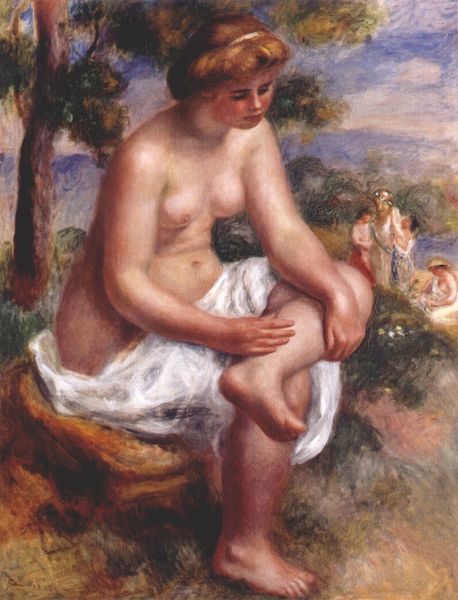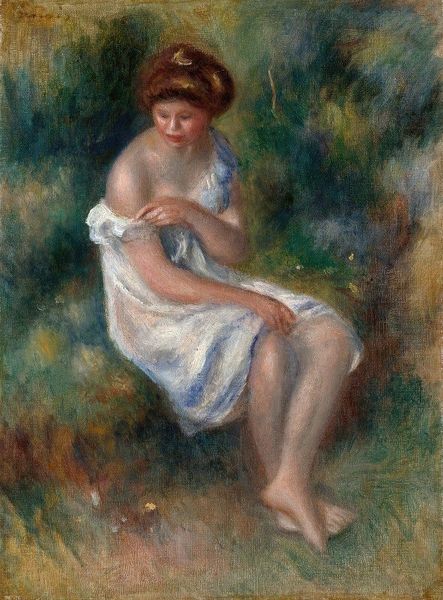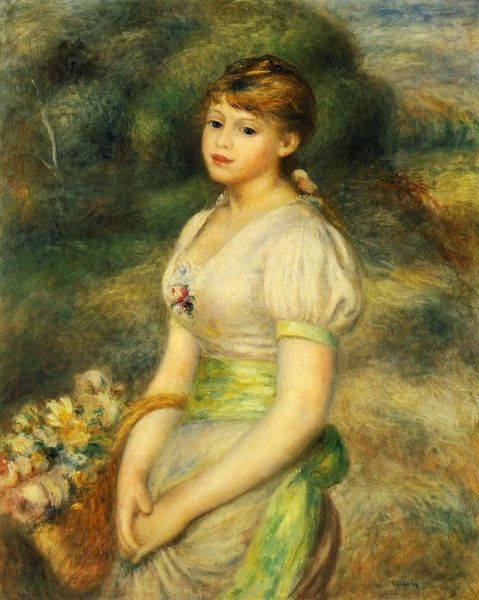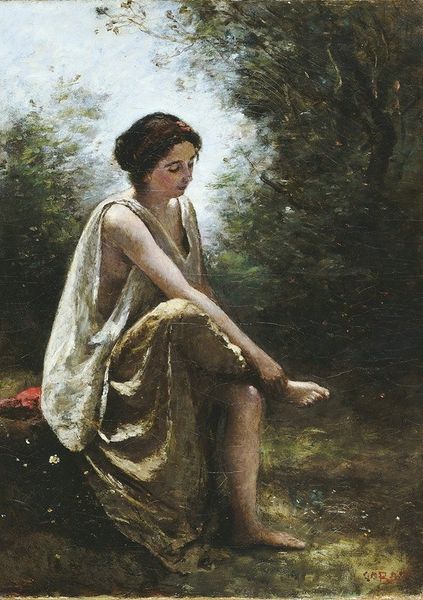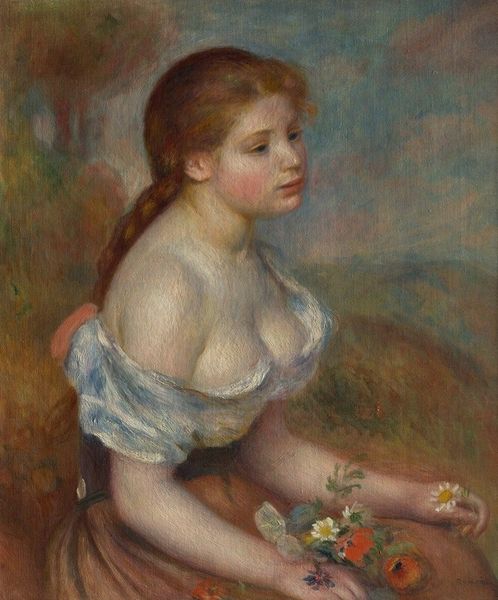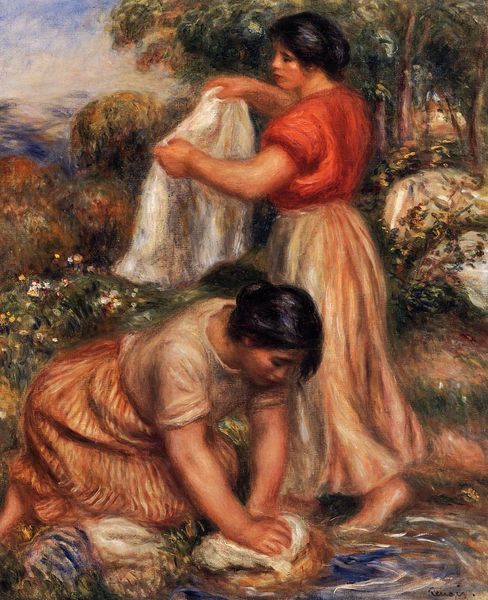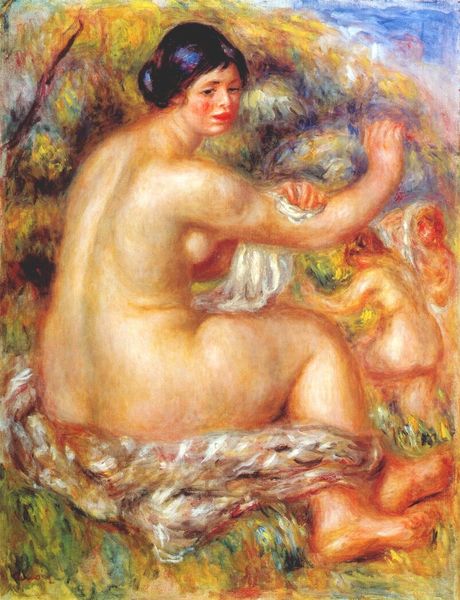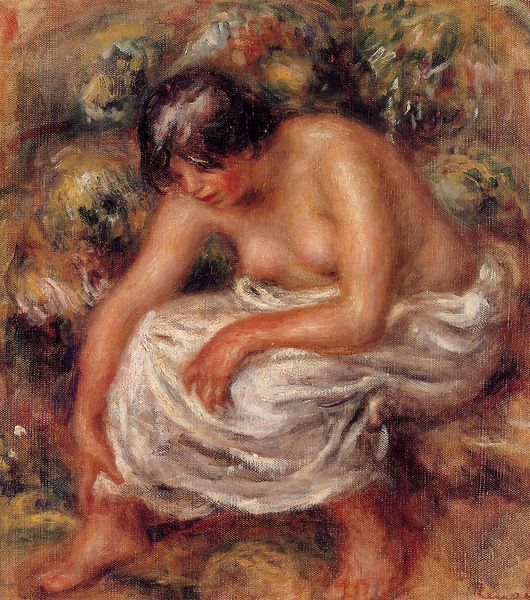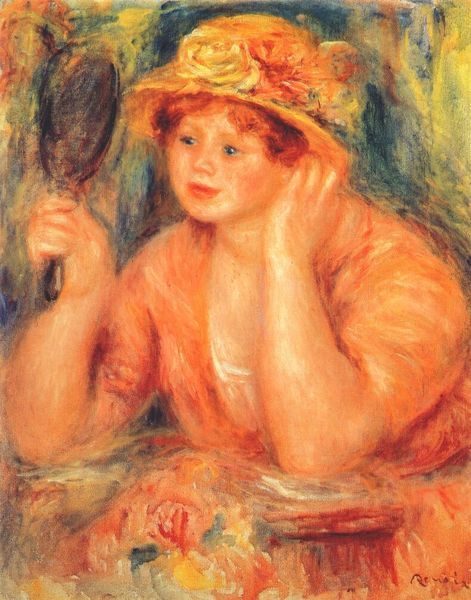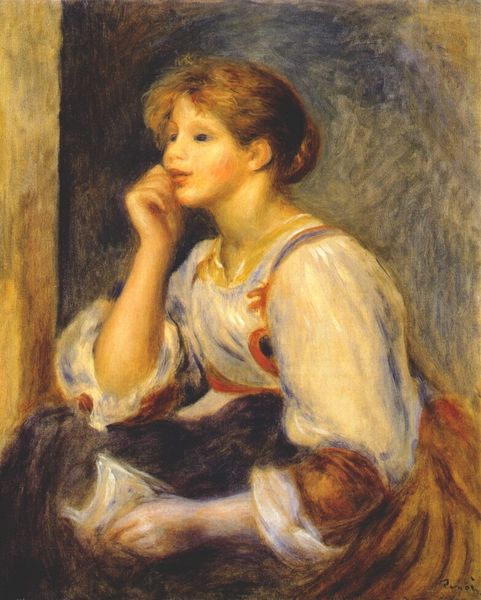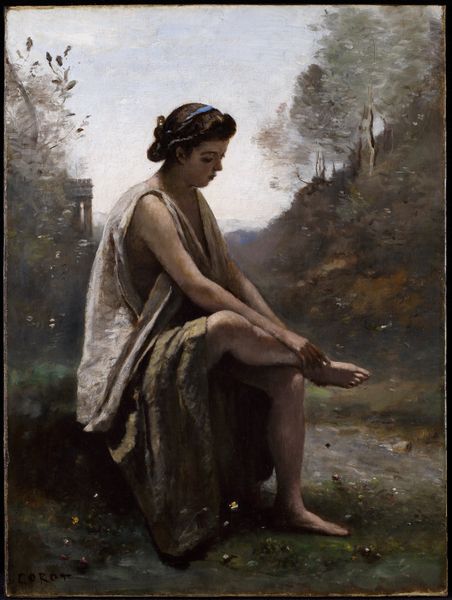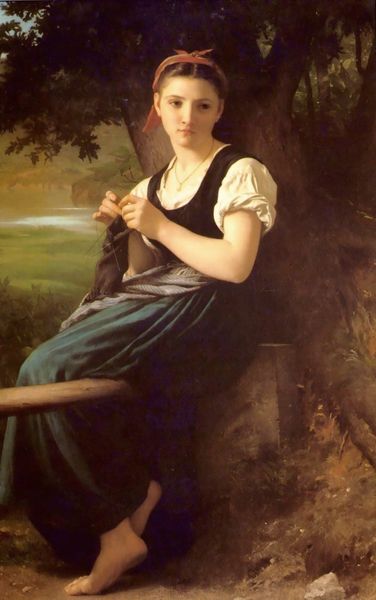
plein-air, oil-paint
#
portrait
#
impressionism
#
plein-air
#
oil-paint
#
oil painting
#
portrait reference
#
genre-painting
Copyright: Public domain
Curator: Here we have Pierre-Auguste Renoir's “Girl wiping her feet”, painted around 1890, an excellent example of Impressionist genre painting rendered in oil paint, plein-air. Editor: My first impression is one of tranquil intimacy, almost as if we've stumbled upon a private moment. The palette feels both vibrant and soft; the brushwork creates a sense of immediacy and transience. Curator: It's interesting you say that because bathing scenes carry so many symbolic meanings, cleansing and vulnerability and transformation. But Renoir grounds this almost mythical subject with a down-to-earth feel, through gesture and composition. Editor: Indeed. The compositional arrangement certainly contributes; the casual pose creates dynamism against the pastoral landscape that's soft around the edges in the Impressionist style, and offers an atmospheric view through a seemingly candid, informal moment. Curator: Think about it as an archetype too. Taking a pause for cleanliness can serve as a ritual, a moment of reflection outside societal structure. How would you analyze its formal structures regarding figure and ground? Editor: From a semiotic perspective, the blurred edges, dappled light, and textured brushstrokes operate as signifiers of spontaneity and ephemerality. Renoir uses the pictorial field to generate and deconstruct both real and implied movement. Curator: But in portraying this quiet scene, does Renoir reference timeless concepts of purity or some other conventional ideal? Editor: The composition subtly implies an Edenic allusion, which would not be unique for genre painting. The symbolic cleansing links this earthy setting back to mythic scenes of a more ancient or historical, memory of arcadia. It evokes timeless themes of beauty and vulnerability, which could add resonance to our experience. Curator: I found your interpretations compelling. Thanks, these analytical angles added a richness I didn't anticipate when studying its place within art history. Editor: I think deconstructing some of the form offers us a renewed appreciation for Renoir’s attempt at portraying the quotidian while creating such subtle, and somewhat elusive, cultural and art-historical touchstones.
Comments
No comments
Be the first to comment and join the conversation on the ultimate creative platform.
